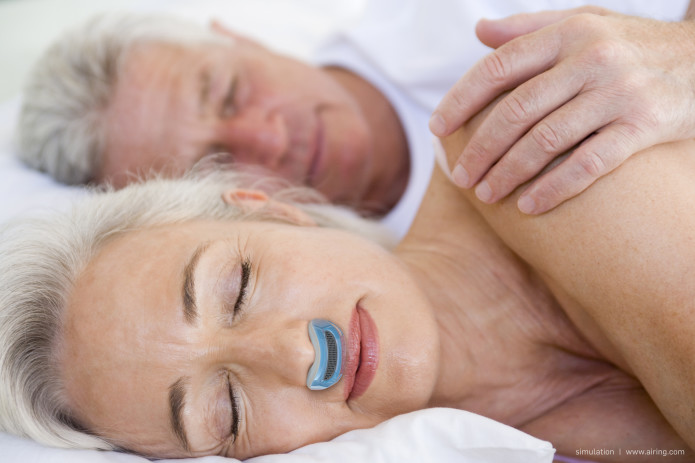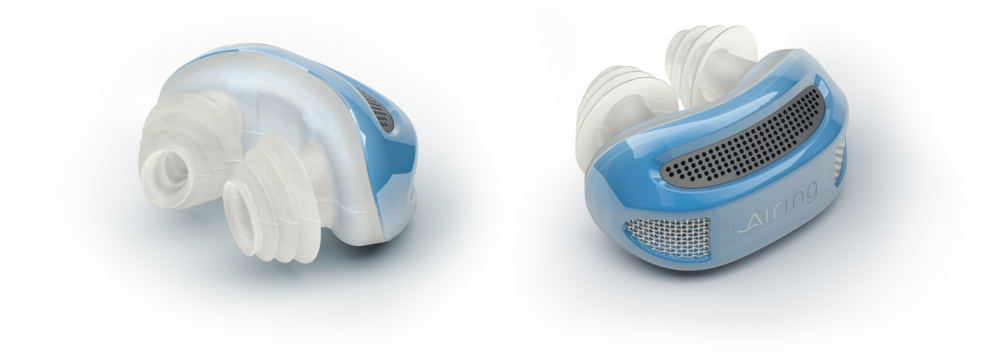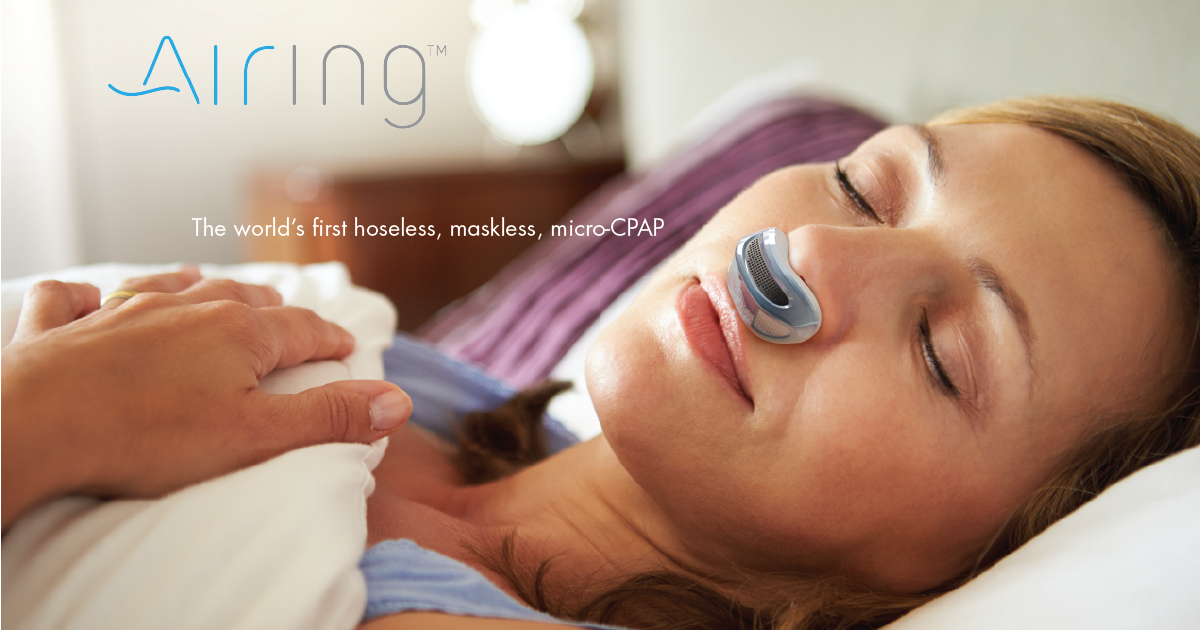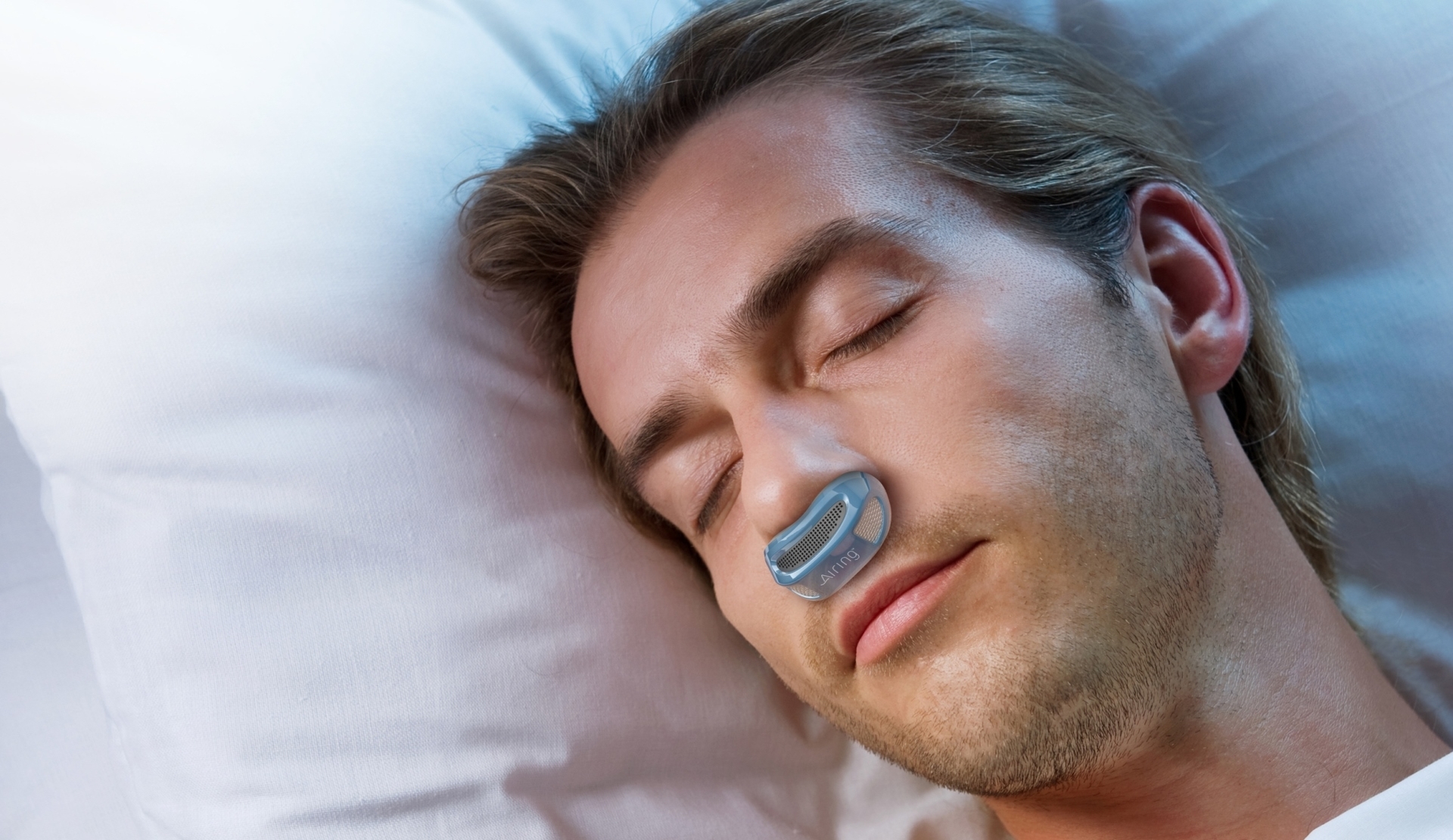Airing is a novel maskless, hoseless, cordless micro-CPAP device to manage the sleep apnea. Too many people have sleep apnea, and too many of those don’t wear their CPAP masks. Obstructive Sleep Apnea (OSA) is typically caused by a blockage of the airway when the soft tissue in the rear of the throat collapses during sleep. Untreated, OSA causes a number of serious health problems, including high blood pressure, cardiovascular disease, memory impairment, weight gain, and headaches. The standard treatment for OSA is what is known as 'Continuous Positive Airway Pressure,' or CPAP. CPAP machines can mitigate this problem, but their poor design causes sleep apnea sufferers to give up on it: 80% of CPAP users stop using it within one year. Airing intends to change that with a revolutionary design that works without uncomfortable masks and hoses.
The world’s first maskless, hoseless, cordless micro-CPAP device Airing liberates from the 'mess' of uncomfortable straps and the noisy hum that both come with other CPAP machines. Classic CPAP masks have a hard time maintaining a perfect seal onto the face as people move during sleep. The sound of rushing air wakes up not only wearer but also your partner. The hoses used by CPAP masks drag on the end table and on the bed, causing sleep disruptions. Airing creates a tight fit inside nostrils with no hoses to catch on anything. Better yet, snoring is eliminated.

Airing’s design is a byproduct of several inventions, chief of which are the micro-blowers originally intended for heat regulation for chips in computers. These micro-blowers are entirely contained within the Airing device, so there is no need for external air hoses. Each Airing device is battery operated, so no need for any power wires. Just 'plug' the comfortable buds into your nostrils and breathe all night long.
The Airing device has been designed so as not to require active humidification. The human nose has evolved to filter the air it breathes in through a pathway with tiny hairs and to humidify this pathway with every exhalation. Airing is for one night’s use only and is recyclable.

The Airing is powered by a zinc-air battery, which lasts eight hours. It provides about ten times more stored energy in the same space as the same-sized Lithium-ion battery. In fact, a rechargeable Lithium-ion battery that could last through the night would make the device too heavy for convenient and comfortable use, this is the primary concern.
Zinc-air battery inexpensive technology was previously used for years in Polaroid film packages and can be manufactured cost-effectively using the roll to roll process. Unlike some of the other caustic, more corrosive, battery technologies, the Zinc-air is environmentally benign - basically a common metal and soap. A future design may use a power source that is rechargeable without being excessively bulky or heavy. Today, Zinc-air is the best choice to get a working Airing device into the hands of those who are desperately seeking relief from traditional CPAP machines.

The team has switched over to a new material which is less rough and should perform better. The residual stresses in the film could be affecting the valve movement. Airing team is still exploring this issue, but it seems that the inherent stress in the film may not be a problem. With the new 3D laser scanning microscope, they are now able to take very accurate measurements of surface roughness. It also can give a precise understanding of the micromachining quality; for example, how flat the valves are.
Launched in June, 2015, a campaign on Indiegogo to generate enough money to make Airing happen and had a very successful campaign with raised $1, 946, 882 USD by 21 038 backers. Still, the company requires strong partners and invites people to get behind this important technological marvel that is just too revolutionary to not exist.


